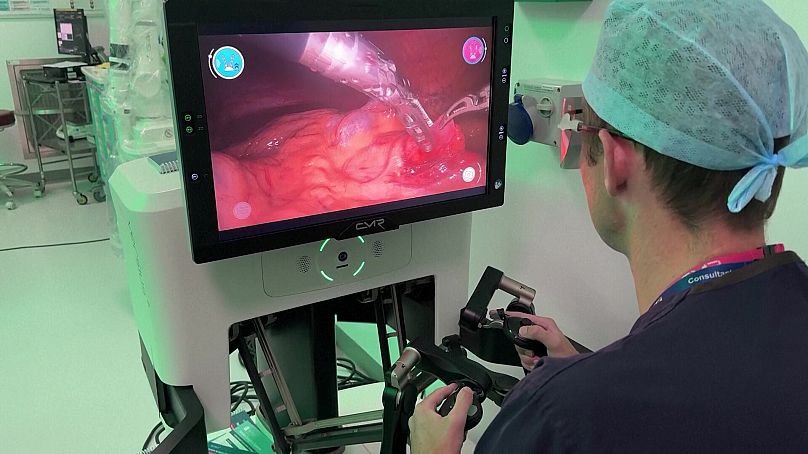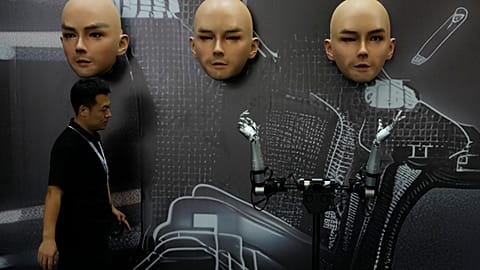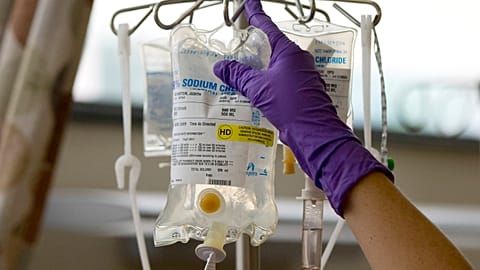The device has been trialled on adults for three years and demonstrated faster recovery times, less postoperative pain, and less time in the hospital.
A seven-year-old in the UK has become the first child in the country to get kidney surgery with a pioneering robot-assisted device.
Reece had an obstruction that inhibited the flow of urine from his kidney.
"He went to the park, and he fell on some sort of pole. He said he was okay, then went to my dad’s in the evening, and played some games, he went to the toilet and there was some blood in his urine,” said Reece’s mother, Elizabeth Wilton.
“(At the hospital), he had scans, nothing came of that particular accident but then when he had the scans, they found out he had a problem between the kidney and the bladder, with the tubing, it wasn't quite as it should be," Wilton added.
A procedure known as laparoscopic pyeloplasty is performed to treat this obstruction, repairing the narrowing where the ureter meets the kidney.
Traditional surgery for this procedure brings with it some complications.
“The two traditional approaches to surgery are open operation where you relatively big cut and do things with your hands, or traditional laparoscopic surgery involves similar little cuts on the tummy," said Ewan Brownlee, a consultant paediatric urologist at the University Hospital Southampton who performed the procedure.
“But the instruments are straight-shafted instruments with a jaw on the inside and a straight scissor handle on the other end, so the range of movement is relatively limited around the fulcrum point. So, when you're doing something like suturing it's relatively awkward to do that with those instruments”.
The robot-assisted device, developed by Cambridge-based CMR Surgical Ltd, could help to achieve precision that human handling cannot through the use of small, surgical instruments and robot-assisted manual control, as well as a magnified high-definition screen.
"The robotic-assisted bit is still the same idea - a little cut in the tummy, straight shaft of an instrument, but the instrument on the inside instead of a straight jaw has a full wristed motion to it and then on the outside instead of a straight handle you've got something that looks more like a joystick," Brownlee added.
"So, it’s still fully surgeon-controlled. Robotic-assisted might sound like it's automated in some way, but actually it's still surgeon-controlled".
Robot-assisted surgery increasingly common in the UK
London's Guy's and St Thomas' NHS Foundation Trust said in 2023 that almost all prostate, kidney and lung cancer surgeries were completed robotically, with over 10,000 robot-assisted procedures performed over the last 20 years.
According to Southampton Children’s Hospital, the robot has advanced precision and manoeuvring capability allowing it to be used on younger patients.
The device has been trialled on adults for three years and demonstrated faster recovery times, less postoperative pain, and less time in the hospital.
The robotic arms used for Reece’s procedure have a 720-degree range of motion which allows surgical instruments to be small enough to perform complex operations on children.
"When I first heard it was going to be a robot operating on him, I was like eh? But then obviously when you find out more that it's a doctor operating the robot and everything like that it's a lot more understandable," said Reece’s father, Ashley Wilton.
"It just shows how advanced technology has come and how intricate they can get into places that aren't easy to in a normal operation," Elizabeth Wilton added.
After the operation, Reece tells his mother, Elizabeth, he feels okay.
She said, "He's still himself. He's not changed. He's been a bit groggy, restless like anyone would be especially at his age, but he's done really well. It's normal, is it? It's just getting back to normal really".
Reece was discharged the day after his surgery and is expected to make a full recovery.
The surgeons taking part in the trial hope to see paediatric robot-assisted surgery become common practice across the world.
"Ultimately, my hope is that there can be more minimally invasive procedures for children as you say not just in the UK but potentially around the world. The robotic-assisted technology should make it more straightforward to do these minimally invasive procedures where sometimes open procedures can't really be carried out," Brownlee said.
Southampton Children’s Hospital says it will trial the device on 150 young patients in a study.
For more on this story, watch the video in the media player above.



















